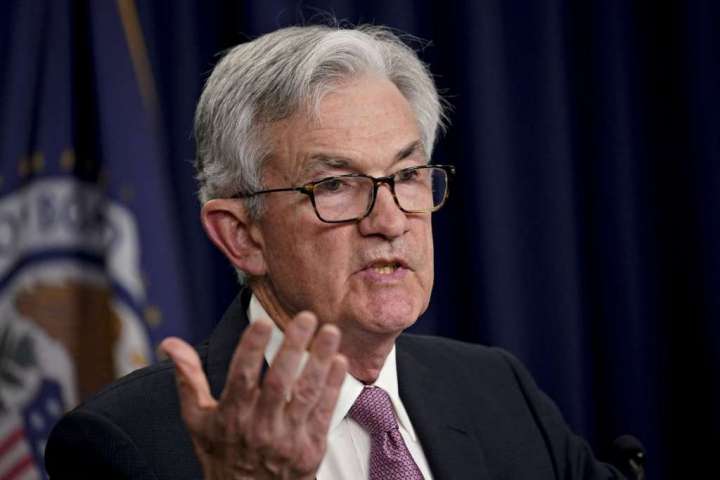In August 1979, when Paul Volcker took over as chairman of the Federal Reserve’s Board of Governors, he was agreeing to preside over the biggest challenge that institution had faced since at least World War II. His predecessors had allowed inflation to hit record highs, a double-digit disaster. The Fed could stop it with aggressive monetary policy — but doing so likely meant a brutal recession.
Where do we go from here: Inflation or recession?

Under Volcker, the Fed finally put its proverbial foot down. Interest rates soared; businesses that depended on debt financing — including construction and auto sales — cratered; and the unemployment rate hit 10.8 percent, a level that would not be seen again until the global financial crisis. But it worked: Inflation dropped from 13.5 percent in 1980 to 3.2 percent in 1983.
This story is usually told triumphantly — brave Volcker, taking the painful but necessary steps! Yet now that our own Fed chair may face a similarly ugly trade-off, I confess I’m thinking more about the deep pain that recession caused. It is, of course, bad to lose 8 percent of your purchasing power to inflation. But it’s even worse to lose a hundred percent of it to unemployment — and the collective suffering of those who lose their jobs is arguably much greater than the pains of households strained by inflation.
So I asked John Huizinga, who taught me macroeconomics 20 years ago at the University of Chicago’s Booth School of Business: Why is a recession better than high inflation? His answer, in brief: It isn’t. “If it were me and I was in charge of monetary policy, would I cause a big recession to keep inflation low? No. But I would try to get to a stable inflation rate, and then gradually lower the rate of inflation over time.”
Follow Megan McArdle‘s opinions
FollowTo understand what he’s driving at, imagine that you knew that every year, inflation would be exactly 10 percent. That’s a very high rate of inflation, but if everyone knew what it was going to be, we would develop ways to mitigate the impact. Interest rates on bonds and savings accounts would rise to offset inflation losses. Employment contracts would specify 10 percent annual cost-of-living increases. Social security checks and pensions would have similar adjustments built in.
Now compare that to an unexpected 10 percent, which is close to what we’re experiencing now. Suddenly everybody’s grocery budget skyrockets, savings lose a big chunk of their value and people worry about being able to put gas in the car. That’s a whole different, and much worse, phenomenon, because it makes it impossible to plan our financial lives.
“We have not moved to a new equilibrium where the amount of inflation is what’s expected,” says Huizinga. “That’s the worst kind of inflation because it means we’re making bad decisions every day.” If we’d known, we’d have put mitigation measures in place. Instead, we’re slammed with costs we didn’t plan for.
Now, obviously, it would have been better still never to have had the inflation at all, since those adjustments will be imperfect; someone who plowed their life savings into a fixed annuity right before inflation took an 8 percent bite out of its value is now permanently worse off. Moreover, the very adjustment mechanisms that help people offset the cost of inflation can make it harder for the Federal Reserve to get inflation under control. If businesses expect costs to rise by 5 percent next year, they’ll demand higher prices to offset the increase, and if workers expect higher prices, they’ll demand higher wages, which translates into higher costs for businesses. When expectations become “un-anchored” from monetary policy in this way, inflation feeds on itself.
But absent a time machine, it’s too late to not have the inflation. So what to do now?
I agree with my old professor that probably the best thing for the Fed to do is stabilize inflation and then lower it gradually. I just wonder whether that’s possible. For one thing, it may already be too late to avoid a recession; we’ve already had one quarter of negative growth. But the greater uncertainty is whether the Fed could announce a policy of high but stable inflation and make it stick.
After decades of credibly maintaining a 2 percent inflation target, could the Fed suddenly announce that it will let inflation stay high — but go no higher? Or would expectations of future inflation slip their anchors and take off for the stratosphere? Would it be politically possible for the Fed to stay that course, with anxious Americans clamoring for Congress to do something (like appoint inflation hawks to the Board of Governors)? It may be that for all its costs, the Volcker Way is still the best option open to us, given the political constraints — though if so, that’s all the more reason for the Fed to make sure that inflation not only gets low, but stays low.
“If you ever let inflation begin again, who knows how quickly people will begin to expect it?” says Huizinga. And no matter how you do it, “breaking that cycle is very expensive.”






